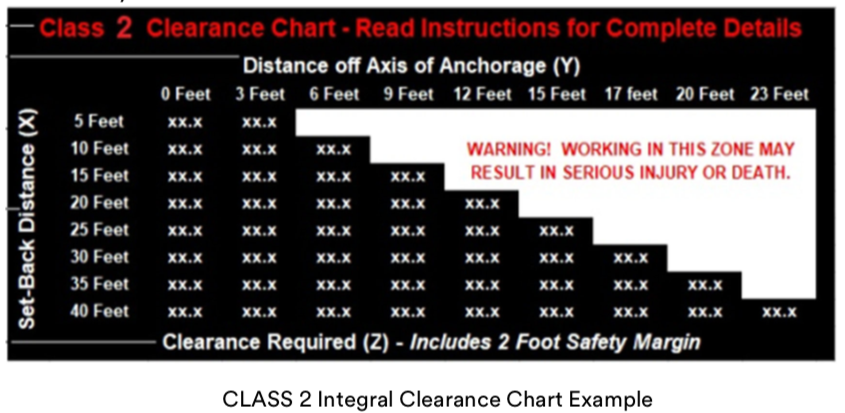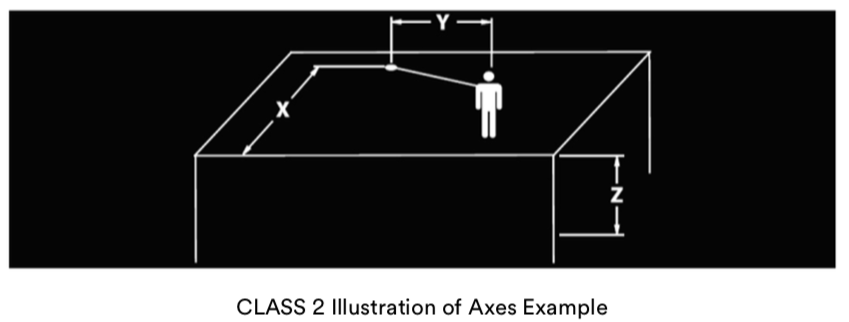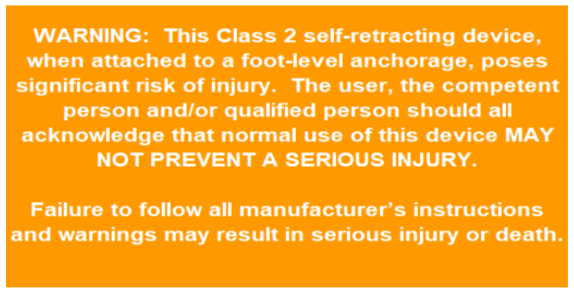What Changes are Coming to the Self Retracting Device Standard (SRL/ANSI)?
The Self-Retracting Devices (SRDs) Standard has been revised. The new standard is set to go into effect on August 01, 2022, but employers should start preparing for the new ANSI/ASSP Z359.14 2021 as soon as possible to make sure they comply with the law. These guidelines have been changed periodically over the years as new regulations take precedence in the industry. The standard was last revised in 2014, but the latest iteration contains new information for employers and SRD users.
New Requirements:
Regulators have added several new requirements, including:
The test mass for the ANSI/ASSP Z359.14 has increased from 282 pounds (128kg) to 310 pounds (140kg).
Class 2 self-retracting lifelines must come with an integral energy absorber on the lifeline. This energy absorber must meet all ANSI/ASSP Z359.14 testing requirements. If the device attaches to the user’s dorsal D-ring instead of the anchorage, no energy absorber is required. The SRD must provide some means of dissipating the arresting forces to reduce friction.
Class 2 devices must also include safety labels illustrating a fall clearance table and a diagram of the axes shown in the table. These labels should be clearly visible to the user. They should be located near the area where the device attaches to the body harness.


If the SRD doesn’t have an internal braking system, it must be able to hold a minimum of 1,800 pounds (8kN) static load while the brake pawls or other brake activation system is engaged and locked with at least 75% of the lifeline constituent remaining on the drum assembly.
Self-retracting lanyard, personal (SRL-P) devices with twin or dual legs must hold a 3,600-pound (16kN) load applied from leg to leg. SRL-P devices designed to wrap around an anchorage or tie back onto themselves must hold a load of 3,600 pounds (16kN) applied after completion of 2,500 cycles of abrasion testing with the lifeline constituent wrapped around a testing I-beam fixture.
SRL-P and Class 2 devices don’t need to retract after the overhead dynamic performance tests.
Class 2 SRL-P devices must include a fall clearance requirement label.

SRL-P devices must pass a dynamic performance test with a 310-pound (140kg) weight and a 6 ft (1.8m) free fall and keep the maximum arresting force (MAF) at 1800 pounds (8kN) or less. (The lifeline should not be pinned or restrained to prevent retraction).
Class 2 SRD must pass a dynamic test over an edge with a 310 (140kg) pound weight, and the average arresting force (AAF) must not exceed 1350 pounds (6kN) and MAF not exceed 1800 pounds (8kN) ambient and AAF 1575 pounds (7kN) conditioned.
Self-retracting lanyard with integral rescue capability (SRL-R) function tests are the same, but static testing when in retrieval mode is now 3600 pounds (16kN).
SRLs with internal brakes must pass a test with the lifeline shortened to 42 inches (1,067mm), then have 36 inches (914mm) +/- 1.0-inch (25mm) clipped out, then have a 310-pound (140kg) weight free falling 2 ft (.6m) and must maintain MAF at 1800 pounds (8kN) or less.
The following warning card must be provided as a separate card insert with each SRD.

Updated Requirements:
Regulators have also updated the following standards:
All webbing and synthetic rope used in Class 2 devices must now have a minimum tensile breaking strength of 5,000 pounds (22.2kN).
During the Static Strength Test, all SRDs must be capable of withstanding a 3,600 pound (16kN) static load for one minute with the lifeline constituent fully extracted.
During ambient dynamic performance testing utilizing a 310-pound (140kg) test mass, the AAF allowed has been increased from 900 (4kN) to 1350 (6kN) pounds, and the arrest distance (AD) has been shortened to 42 inches (1,067mm). For the conditioning tests, AAF remains at 1575 pounds (7kN), but the AD is now 42 inches (1,067mm).
SRL-P and Class 2 devices can only have up to 48 inches (1,219mm) of line outside the SRL housing when fully retracted.
The classes of SRLs have been revised as well.
- Class 1 SRD is for use with anchorages AT or ABOVE the dorsal D-ring. Maximum allowable freefall should not exceed 2 ft.
- Class 2 SRD is for use with anchorages ABOVE or BELOW the dorsal D-ring. Maximum allowable freefall should not exceed 6 ft (1.8m).
Your ANSI Z359.14- 2014 products are still acceptable to use as long as the equipment passes a competent person inspection. The product does not need to be retired when there is an ANSI standard update.
For a manufacturer to mark a product as being ANSI Z359.14 compliant, testing and passing test protocols to the 2021 criteria must be completed by February 1, 2023. ANSI has pushed this date out 6 months from the original August 1, 2022. No product can be marked to meeting older ANSI Z359.14-2014 versions after February 1, 2023.
Employers should begin the process of inspecting and updating their fall protection equipment and safety gear now so they aren’t caught off guard when the new standard goes into effect later this year.
_____
Appendix: List of Acronyms
AAF - Average Arresting Force
AD - Arrest Distance
ANSI - American National Standards Institute
ASSP - American Society of Safety Professionals
MAF - Maximum Arresting Force
SRD - Self-Retracting Device
SRL - Self-Retracting Lanyard or Self-Retracting Lifeline
SRL-P - Self-Retracting Lanyard, Personal
SRL-R - Self-Retracting Lanyard with Integral Rescue Capability
Recent Posts
-
Customizing Gas Detectors: Tailoring Solutions to Fit Your Unique Requirements
In today’s diverse industrial landscape, a one-size-fits-all approach to safety simply doesn’t cu …Jul 3rd 2024 -
10 Ways to Prevent Wildfires
You can prevent wildfires by extinguishing flames before you leave the worksite. Avoid practicing …Jul 1st 2024 -
ANSI/ISEA 138 Safety Gloves: Ensuring Hand Protection
The human hand is an anatomical masterpiece and arguably the greatest tool attached to our bodies …Jun 25th 2024





